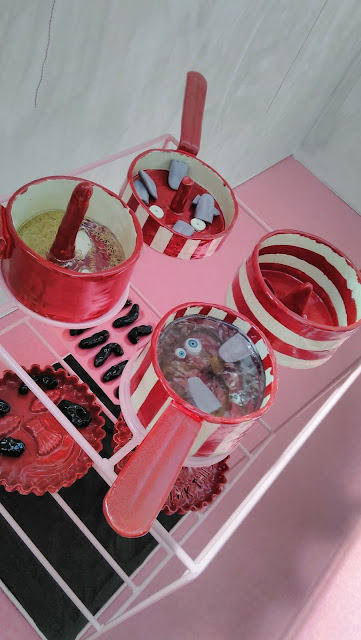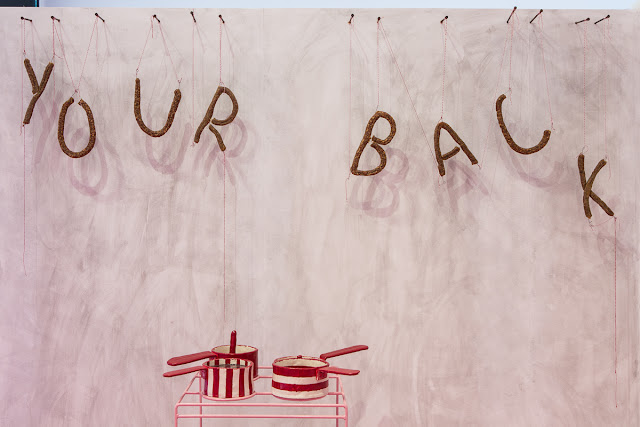 |
| Emma Hart and Jonathan Baldock: still from Love Life, 2017 |
Sticking to
Britain and excluding, in case of list-clogging bias, the ten shows* in which I
was closely involved, here are a few things which stick in the mind:
Jasper Johns: Something
Resembling Truth at the RA was mostly resembling brilliant.
Melancholia. A Sebald
Variation at the
Inigo Rooms, Somerset House was the top group show, just ahead of Transient Space at Parafin.
Mark Leckey: the simultaneous chance to see both
Dream English Kid at Tate Britain and
the development from it, Affect Bridge
Age Regression at Cubitt Gallery, was not to be missed…
No matter
Mum made it big in Venice and brother Eddie is on a roll, Florence Peake came forward with the Peake / Barlow clan’s best London
shows at Bosse & Baum and Studio Leigh.
 |
| Love Life: Act 1, PEER. London |
Emma Hart and Jonathan Baldock had an excellent year: their Love Life collaboration entertained in London, Blackpool and
Bexhill; his retrospective took over CGP in Bermondsey; she had her Max Mara
prize show at the Whitechapel and perhaps the most-noticed stand at Frieze with
ceramic satellite dishes for Sunday Painter.
Sarah Roberts’ Torremolinos-Tableaux-Tongue-Twister
(After Sun) at Brixton’s Block 336 was my favourite immersive installation.
The Barbican’s
Curve Gallery had a good year, mainly
through film - Richard Mosse: Incoming and John Akomfrah: Purple.
Parasol unit also did well, with Rana Begum and Martin Puryear especially persuasive.
Philip Guston: Laughter
in the Dark, Drawings from 1971&1975 at Hauser & Wirth was the
high point of a trend towards the Frieze Masters era of art in major commercial
galleries, together with two eccentrically wonderful de Chirico shows at Namhad Projects and Tornabuoni.
 |
| Love Life: Act 2, Grundy, Blackpool |
Was Thomas Ruff: Photographs 1979 – 2017 at the Whitechapel the best photo show, or
was it – contrastingly – Gregory
Crewdson at the Photographer’s Gallery, Wolfgang Tillmans at the Tate or
Torbjørn Rødland at the Serpentine? I reckon Ruff.
Thaddaeus Ropac was the most significant gallery to
open in a year of several regrettable closures, and Robert Longo’s first London solo show Let the Frame of Things Disjoint was quite a tour de force there.
The various Tates encompassed at least four top retrospectives: Rachel Whiteread, Ilya and Emilia Kabakov, Robert Rauschenberg and Otto Dix - not to mention the well-received Soul of a Nation: Art in the Age of Black Power.
Maybe the
best of the many futuristically-inclined shows was Lucy Raven: Edge of Tomorrow
at the Serpentine, but the leading gallery for a sequence of such fare was Annka Kultys.
 L L |
| Love Life: Act 3, de la Warr, Bexhill |
* Those were:
Alice
Anderson: Post-Digital, Union
Gallery, London
Ears For The Eyes, Transition Gallery, London
Tony
Charles: Unpainting, Platform A
Gallery, Middlesbrough:
Show Us Your Process, House Of St Barnabas, London
The Other Side, House of St Barnabas, London
The High Low Show, Laure Genillard Gallery, London
Joe Madeira:
Setting the Scene, Online Exhibition
Make a Mark, Arthouse1, London
Drift, JGM Gallery, London
Collateral Drawing, Strange Cargo, Folkestone











